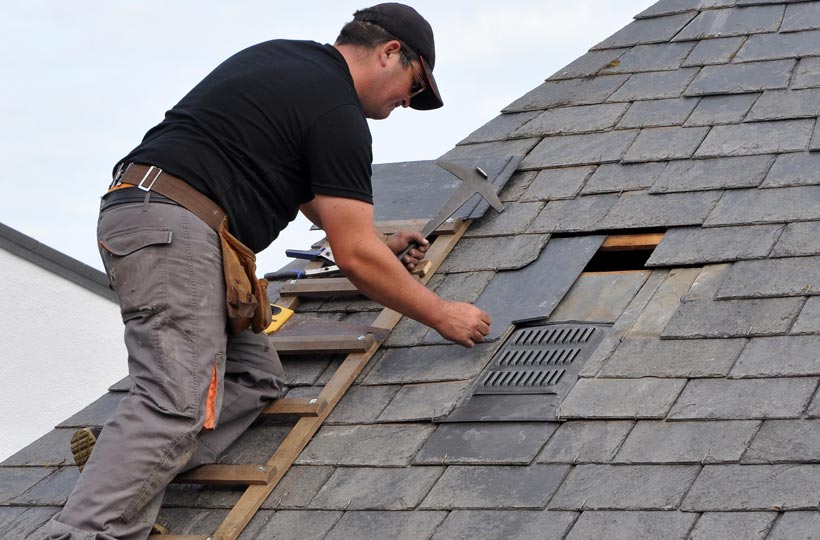The roof of a building serves as its primary defense against the elements, providing protection and shelter for occupants and belongings within. However, over time, wear and tear, weather damage, and other factors can compromise the integrity of the roof, necessitating repairs. In this comprehensive guide, we explore the essential purpose of fixing a roof, highlighting the crucial roles it plays in safeguarding the structure, enhancing energy efficiency, preserving property value, and ensuring the safety and well-being of occupants. From shielding against rain and snow to supporting the structural integrity of the building, roof fixing serves a vital function in maintaining a functional and secure environment to get 24 hour emergency roof repair.
Introduction
Maintaining a functional roof is essential for the overall well-being and longevity of a building. Roof fixing, or roof repair, plays a crucial role in addressing common issues and ensuring that the roof continues to perform its primary functions effectively. In this introductory section, we provide an overview of the purpose of roof fixing, emphasizing its importance in preserving the integrity of the structure, enhancing energy efficiency, and protecting occupants and belongings from the elements.
Protection Against the Elements
One of the primary purposes of fixing a roof is to provide protection against the elements, including rain, snow, hail, wind, and UV radiation. A well-maintained roof shields the building interior from water infiltration, moisture damage, and structural deterioration caused by exposure to adverse weather conditions.
Shielding from Rain, Snow, and Hail
Roof fixing helps prevent water leaks and moisture intrusion, minimizing the risk of water damage to the interior of the building. By repairing damaged or missing shingles, sealing gaps and cracks, and reinforcing vulnerable areas, roof fixing ensures that the roof remains watertight and resistant to rain, snow, and hail.
Structural Integrity and Safety
In addition to protecting against the elements, roof fixing contributes to the structural integrity and safety of the building. A well-maintained roof supports the overall structure, prevents structural deterioration, and eliminates safety hazards that could pose risks to occupants.
Maintenance of Building Structure
Roof fixing helps preserve the structural integrity of the building by addressing issues such as sagging, warping, or weakening of roofing materials. By repairing damaged or deteriorated components, reinforcing structural supports, and ensuring proper ventilation and drainage, roof fixing helps maintain the stability and longevity of the building.
Energy Efficiency and Cost Savings
Another important purpose of fixing a roof is to enhance energy efficiency and reduce utility costs. A well-maintained roof with adequate insulation and temperature regulation helps minimize heat loss in winter, reduce cooling needs in summer, and lower overall energy consumption.
Insulation and Temperature Regulation
Roof fixing involves installing or replacing insulation materials, sealing air leaks, and optimizing ventilation to improve energy efficiency and indoor comfort. By reducing heat transfer through the roof, roof fixing helps maintain consistent temperatures throughout the building and reduces reliance on heating and cooling systems.
Aesthetic Appeal and Property Value
In addition to its functional benefits, roof fixing also contributes to the aesthetic appeal and property value of a building. A well-maintained roof enhances curb appeal, attracts potential buyers, and increases market competitiveness, thereby preserving and enhancing the overall value of the property.
Enhancement of Curb Appeal
Roof fixing restores the visual attractiveness of the building exterior by repairing damaged or deteriorated roofing materials, improving the overall appearance, and enhancing curb appeal. A well-maintained roof contributes to the overall aesthetics of the property and creates a positive first impression on visitors and passersby.
Conclusion
In conclusion, the purpose of fixing a roof extends beyond mere maintenance and repair; it is essential for preserving the integrity, safety, and value of the building. From protecting against the elements and supporting structural integrity to enhancing energy efficiency and aesthetic appeal, roof fixing serves a vital function in maintaining a functional and secure environment. By investing in professional roof repair services and prioritizing regular maintenance, property owners can safeguard their investment, protect their assets, and enjoy peace of mind for years to come.





